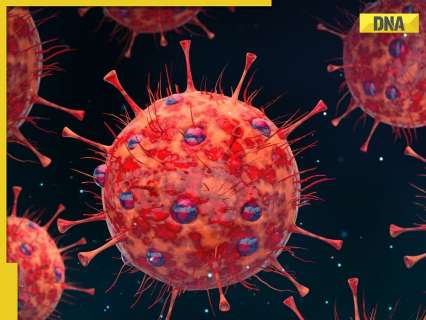Now Reading: DNA TV Show: Covid-19 cases rising again, 257 cases reported in India
-
01
DNA TV Show: Covid-19 cases rising again, 257 cases reported in India
DNA TV Show: Covid-19 cases rising again, 257 cases reported in India

Doctors say that the JN.1 variant of COVID-19 is a new sub-variant of Omicron that came in 2021.
The outbreak of COVID-19 is being seen again in many countries, including India. Corona patients have been found in 11 states and union territories in India, including in Delhi, Maharashtra, Gujarat, Kerala, Tamil Nadu, Haryana, West Bengal, Sikkim, and Rajasthan. The corona patients who are being found now are infected with the JN.1 variant.
So far, 257 patients of JN.1 variant of coronavirus have been found in the country. Whereas, 31 in Hong Kong, 14200 in Singapore and more than 33,000 patients in Thailand have been infected with the new variant of COVID-19. What is the JN.1 variant of Corona? How dangerous is this variant, and what should we do to protect ourselves from it? There are two weapons to fight corona. First information and second caution. One should not have to pay attention to any rumour.
Doctors say that the JN.1 variant of COVID-19 is a new sub-variant of Omicron that came in 2021. This variant was identified for the first time in August 2023. The World Health Organisation (WHO) has considered the JN.1 variant as a ‘Variant of Interest’, which means that it is necessary to keep an eye on the speed of spread of this disease, its symptoms and its severity.
The JN.1 variant spreads from person to person just like other variants of corona. WHO claims that the reproduction rate of the JN.1 variant can be high. In colloquial language, a patient infected with the JN.1 variant can infect more people this time than the previous coronavirus.
It is currently seen in Singapore. Last week, the number of corona cases in Singapore was 11,100, which has increased by about 28 per cent to 14,200 this week. Similarly, the corona positivity rate in Hong Kong is also being seen at 13.66 per cent.
The symptoms of the JN.1 variant of COVID-19 are similar to other variants of COVID-19. Symptoms include dry cough in the throat, mild and high fever which can last for more than 1 or 2 days, runny nose, vomiting or diarrhoea, chills, physical fatigue and weakness, headache, loss of smell and taste. Most of the symptoms are similar to the old Corona.























